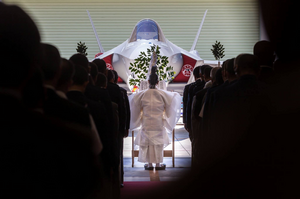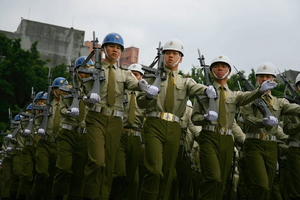User:Really/sandbox1: Difference between revisions
No edit summary |
No edit summary |
||
| Line 190: | Line 190: | ||
During the Anthaos Era, Chóran cultural influence and power reached its peak in the Mesogeian and beyond. Prosperity and progress in the arts, literature, theatre, architecture, music, mathematics, philosophy, and science characterize the era. The Anthaos Era saw the rise of New Comedy, Máchi poetry, translation efforts, and the new school Máchi Philosophies. In science, the works of the mathematicians and the polymaths are exemplary. The religious sphere expanded to include new gods, eastern deities and a syncretism between Chóran culture and new religions stemming from [[Agleia]]. | During the Anthaos Era, Chóran cultural influence and power reached its peak in the Mesogeian and beyond. Prosperity and progress in the arts, literature, theatre, architecture, music, mathematics, philosophy, and science characterize the era. The Anthaos Era saw the rise of New Comedy, Máchi poetry, translation efforts, and the new school Máchi Philosophies. In science, the works of the mathematicians and the polymaths are exemplary. The religious sphere expanded to include new gods, eastern deities and a syncretism between Chóran culture and new religions stemming from [[Agleia]]. | ||
===Lancian Era=== | |||
!Roman Empire Equivalent's rule over the entire nation, notably spreading !Christianity | |||
Then "Eastern Lancian Empire" | |||
===Andronikos Era=== | ===Andronikos Era=== | ||
After the split of the east from the west, the "Eastern Lancian Empire" | |||
===Mitridis Era=== | ===Mitridis Era=== | ||
Revision as of 02:27, 18 November 2023
Collective People's Union Συλλογική Λαϊκή Ένωση (Syllogikí Laïkí Énosi) | |
|---|---|
| Motto: 一Όλοι οι Άνθρωποι Δεμένοι Μαζί! All people bound together! | |
| Anthem: Η Διεθνής (I Diethnís) The International | |
| Syndicate Map of the Collective People's Union Syndicate Map of the Collective People's Union | |
| Capital | Ktonintum |
| Largest city | Gyálinos |
| Official languages | Énositypo (Union Standard) |
| Recognised national languages | Chóran Dyatóran Eschóran |
| Ethnic groups | |
| Religion | |
| Demonym(s) | Enosi (Union-member) |
| Government | Council-based Syndicated Dominant Party State |
| Nikoloz "Niko" Rodoulis | |
| Stamatios Xenelis | |
| Legislature | General Congress of Ktonismos |
| Establishment | |
• Ancient Chóra | 800 BCE |
• Chóran Dark Age | 00 BCE |
• Kováb Era | 00 BCE |
• Anthaos Era | 00 BCE |
• Andronikos Era | 100 CE |
• Mitridis Era | 1430 CE |
• Great Strife | 1900 CE |
• Collective People's Union | 1919 CE |
| Population | |
• 2020 estimate | |
• 2022 census | |
| GDP (PPP) | 2022 estimate estimate |
• Per capita | 52,128 $ |
| GDP (nominal) | 2022 estimate estimate |
• Total | 832 Billion $ |
| HDI (2022 estimate) | 0.797 high |
| Currency | Drachma (CPUD) |
| Date format | dd.mm.yyyy |
| Driving side | left |
| ISO 3166 code | CPU |
| Internet TLD | .cpu |
Chóra, officially the Collective People's Union (Énositypo: Συλλογική Λαϊκή Ένωση) is a transcontinental country situated at the juncture of South Eastern Maris and Western Agleia. It is divided mainly between the Chóran and Eschóran Peninsulas, and borders the Mesogeian Sea to the South and the Mavre Sea to the North. Ktonintum is the country's capital and second-largest city, while Gyálinos is the largest city and economic financial center. Chóra is a multi-ethnic nation comprised primarily of Chóran, Ları and Rоратаn peoples.
One of the world's earliest permanently settled regions, present-day Chóra is home to many pre-historic cites such as Palió Vounó and was inhabited by ancient civilizations including the Chitites, Anánipoi, Ancient Eschóran Peoples, Oraclans, and others. Chóra is considered the cradle of Western civilization, being the birthplace of democracy, Western philosophy, Western literature, historiography, political science, major scientific and mathematical principles, and theatre. The Ancient Oraclate acted as the most culturally significant city-state in Ancient Chóran history, briefly unifying all Chóran city-states until the Erruption of Motabele in 500 BCE which would lead to the Chóran Dark Age. This age would end following the conquests of Máchi the Great, in the wake of which most of the ancient Chóran and Eschóran regions were culturally Ailenized, and this continued through the Anthaos Era and the eventual rise of the Andronikos Dynasty. The Sali Liaks began migrating to the Eschóran Peninsula in the 11th century, ultimately seeing cultural integration into Early Chóran Religious Practices through the Missionary-Saint Savvina. The Liak Kingdom of Rye ruled Eschóra, and the Andronikos Dynasty ruled Chóra until the Great Eastern Invasion when both polities would disintegrate into dozens of Sali Liak and Chóran Principalities. Beginning in the late 13th century, the Mitridis Dynasty united the principalities and conquered the Dyatórans, while aileniziation of Eschóra further progressed during the Mitridis Period. Mitridis Expansion continued under Aimilios II, and during the reign of Erasmia the Spectacular, the Mitridis Empire became a global power.
From the late 18th century onwards, the empire's power declined with a gradual loss of territories. Imperator Aimilios VII started a period of modernization in the early 19th century, leading the Mitridis Empire into the First World War as one of the Imperial Powers in 1893. During the war the Mitridis Government committed genocide against the Bayt-Nisiótes Peoples and deported Rоратаn Peoples. After the 1895 Ascension Crisis of Manos II the 1st Triumvirate sued for peace in desperate circumstances, with all of the nation's Agleian territory partitioned save the Eschóran Peninsula which voted to stay via a close majority in the 1896 Eschóran Plebiscite.
The Assassination of Imperator Manos II and the Young Chóran Revolution of 1899 restricted the authority of the Imperator and restored the Chóran Parliament after a 15-year suspension, ushering the empire into a brief multi-party period. The 2nd Triumvirate took control with the 1905 coup d'état, acting as the Regency Council of the young Imperator Kalliopi III. The 2nd Triumvirate would collapse after the death of Triumvir Omiros Koskiades under mysterious circumstances in 1909, leading to a brief civil war with Imperial-Claimant Manolidell I opposing the reign of Kalliopi III. The war would end with Manolidell's defeat, resulting in a brief centralization of power under first Triumvir, then Dictator Tomas Ioannakis. This would quickly lead to the rise of the Decembrist League, who allied with the Young Chórans would lead the 2nd Young Chóran Revolution in 1917, originally set out to achieve the same goals of re-democratization and the enacting of Imperial-Claimant Manolidell's liberal ideas, would quickly be overtaken by anti-monarchist sentiments, leading to a overthrow and assassination of Tomas Ioannakis and Kalliopi III. A Brief Chóran People's Republic would see formal dissolution of the Mitridis Empire, despite continued resistance of the White Chóran Movement. The end of monarchy initially brought into office a coalition of liberals and moderate socialists, but failed policies of the provisional government under Aléxandros Októvrios would lead to a revolution led by the Red Guard Revolution and a centralization of power around Ktonas Demetriou and the Ypérochist Party In 1922, Red Chóra along with the Eschóra PR and the Dyatóran PR signed the Treaty on the Creation of the CPU, officially merging all three republics to form the Collective People's Union as a single state.
At the expense of millions of lives, the Union underwent rapid industrialization in the 1930s and later played a decisive role for the United Powers in World War II by leading large-scale efforts on the Eastern Front. With the onset of the Cold War, it competed alongside the Alliance for Socialist Liberation for global ideological influence. The 20th century saw some of the most significant Chóran technological achievements, including the human-made satellites and manned spaceflights.
Chóra is a regional power with a geopolitical significant strategic location
Chóra has a rich cultural legacy shaped by centuries of history and the influence of the various peoples that have inhabited its territory over several millennia; it is home to 32 World Heritage Sites and is the fourth most visited country in the world.
Etymology
The name "Chóra" is a hydronym referring to the Chóran Strait which in and of itself is derived from a creation myth of Ancient Chóra. The myth describes the creation of the strait as formed of a battle between the Goddesses of Sea and Soil, Avgi and Alkesta respectively. with the Goddess of the Sea Avgi cleaving the East and West in two, forming the "Cleaved Sea," "Chórénos Thálassanik" in Old Chóran. The first documented use of the term was in 639 BCE by the Aresah the Elder on the Areshan Tablets referring to the tribes and emergent city states as the "Cleaved Ones," the "Chórénoi." The word "Chórénoi" would eventually be concatenated into "Chóran" following the Great Chóran Vowel Shift.
History
Prehistory and early history
One of the earliest settlements in history of Palió Vounó
Early Chitites, Anánipoi, and Oracla Tribes migrations from (Africa?)
Ending with
Ancient Chóra
Conventionally, the Age of Ancient Chóra is taken to begin with the earliest-recorded Epic Choran poetry of Perithório (8th-7th century BCE) and the Chóran urban poleis began to form in the 8th Century BCE, the colonization of the Mesogeian Basin. A city-state Formation of city-states. Oraclate, Trans-Femme Cult Control, leading until Eruption of Motabele
Chóran Dark Age
Collapse of the Oraclate, civil wars, Rise of the Grand Althaalitha, subjugation of most Chóran States and heavily divided.
Kováb Era
Máchi I of Korídon led a general expansion of the Kingdom of Korídon from a rump state to a regional power, going on to act as the de-facto military leader in the defense against the Althaalithan Empire in three wars. The League of Eínai would be founded by 273 BCE by Máchi I of Korídon and Themis of Eínai in the wake of the successes of the 3rd Althaalithan Invasion of Chóran which would see total Althaalithan conquest of the Eschóran Peninsula and forced subjigation of many Chóran city-states. Máchi I of Korídon would press for further political unification of the League of Eínai 300 BCE. Máchi II of Korídon rose to the throne following the assassination of her mother in 310, and quickly acted to solidify Korídon rule by quashing a rebellion that took place in the southern Chóran city-states, and also staged a short but bloody excursion against the city-states to the north. She began a campaign against local chieftains and warlords that stretched as far from Chóran as the region of (Punjab?) in South Agleia . At the time of her death, she ruled over most regions of Chóra and the conquered Althaalithan Empire (including much of Althaalithan (!Egypt)); she did not, however, manage to conquer the (!Indian) subcontinent in its entirety according to her initial plan. Despite her military accomplishments,Máchi the Great did not provide any stable alternative to the rule of the Althaalithan Empire, and her untimely death threw the vast territories he conquered into a series of civil wars, commonly known as the Diadokhoi Wars. Diadokhoi, meaning "Successors" in Chóran.
Anthaos Era
The Anthaos Era covers the period from the death of Máchi the Great in 323 BCE to the death of !Cleopatra in 30 BCE and the subsequent integration of Chóra into the !Roman Empire.
Máchi the Great died on June 10, 323 BCE, leaving behind an empire that stretched from Korídon and the rest of Chóra in Maris to the Inda valley in South Agleia. The empire had no clear successor, with the Kováb family, at this point, consisting of Máchi's half-sister, Korina I; her newborn daughter Máchi III; her reputed illegitimate daughter Andrea; and her mother Zannoulis.
Máchi's death was the catalyst for the disagreements that ensued between her former generals resulting in a succession crisis. Two main factions formed after the death of Máchi. The first of these was led by Iakovos Anthaos, alleged consort of Máchi, who supported the candidacy of Máchi's half-sister, Korina. The second was led by Spyridoula, the leading cavalry commander, who believed it would be best to wait until the coming of age of Máchi's child, Máchi III.
Following three years of war, both parties agreed to a compromise, wherein Iakovos Anthaos would become king as Peverous II and rule jointly with Máchi III, who at the time was only three months old. Peverous was designated as regent of the empire, with Spyridoula acting as his lieutenant. However, soon after, Peverous had Spyridoula and the other leaders who had opposed him murdered, and he assumed full control.
The generals who had supported Peverous were rewarded in the partition of Arylon by becoming satraps of the various parts of the empire, however his position was shaky, because, as !Arrian writes, "everyone was suspicious of him, and he of them."
The first of the major Diadokhoi Wars broke out when!Perdiccas planned to marry Máchi's sister Korina and assert her claim to the throne. This rebellion would break out in !Asia Minor, ultimately causing
Ultimately, Peverous VI would see the consolidation of the Anthaos Empire into the Chóran and Eschóran Peninsulas in 275 BCE, out of the newly formed city of Gyálinos, leading the Chóran world into a century of peace.
During the Anthaos Era, Chóran cultural influence and power reached its peak in the Mesogeian and beyond. Prosperity and progress in the arts, literature, theatre, architecture, music, mathematics, philosophy, and science characterize the era. The Anthaos Era saw the rise of New Comedy, Máchi poetry, translation efforts, and the new school Máchi Philosophies. In science, the works of the mathematicians and the polymaths are exemplary. The religious sphere expanded to include new gods, eastern deities and a syncretism between Chóran culture and new religions stemming from Agleia.
Lancian Era
!Roman Empire Equivalent's rule over the entire nation, notably spreading !Christianity
Then "Eastern Lancian Empire"
Andronikos Era
After the split of the east from the west, the "Eastern Lancian Empire"
Mitridis Era
Decade of Unrest
Collective People's Union
Politics
Governance
Administrative divisions
Largest cities
Foreign relations
Military
Military and Defense Market
Police Forces
Economy
Industry and Services
Corporate Conglomerates
Agriculture
Mining
Commerce and finance
Media
Infrastructure
Transportation
Shinkansen
Telecommunications
Energy
Tourism
Public policy
Geography
Climate
Wildlife
Demographics
Ethnicity
Religion
Religion in Ilbon
Education
Healthcare









